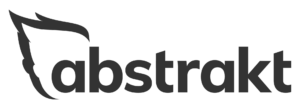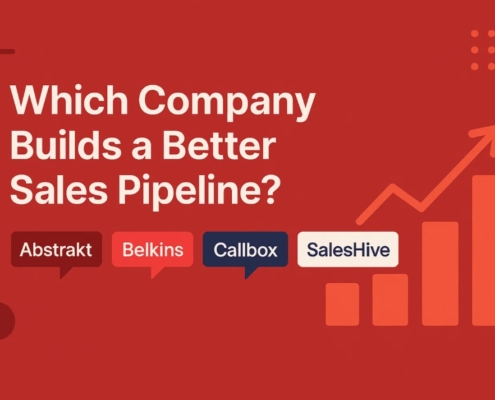

Understanding the distinction between a lead and a prospect isn’t just sales jargon; it’s fundamental to building an efficient pipeline and accelerating revenue growth. While these terms are often used interchangeably, they reflect different levels of buyer intent. The clarity between the two empowers sales teams to focus efforts, improve conversion rates, and close more deals faster.
Defining Leads and Prospects
What is a Lead?
A lead is any individual or business that has indicated interest in your product or service but hasn’t yet been qualified as a viable opportunity. That interest could come from a website form, a LinkedIn social ad click, or a referral. The defining factor? They’ve provided contact information, opening the door to further engagement.
Leads can be divided into marketing-qualified leads (MQLs) and sales-qualified leads (SQLs). MQLs have interacted with content or campaigns but aren’t ready for direct outreach. SQLs, on the other hand, have met specific criteria that indicate they’re ready for a conversation with sales.
Leads can also be classified as cold, warm, or hot based on their behavior. Cold leads might be early in the awareness stage. Warm leads are showing consistent engagement. Hot leads are ready to buy and need prompt action. Segmenting leads this way allows for more strategic outreach. Hot leads get high-priority treatment. Cold leads might go into long-term nurture sequences. Each category requires a different sales motion to move them down the funnel.
Read More: MQLs vs. SQLs: What You Need to Know
What Is a Prospect?
A prospect is a qualified lead — someone who’s been vetted and confirmed as a potential customer based on their fit within your target market and alignment with your buyer persona. This qualification process often involves evaluating key factors like budget, authority, needs, and timeline (BANT), as well as the probability of conversion. Prospects sit deeper in the sales funnel and have demonstrated a level of interest or urgency that signals genuine opportunity.
Moving a lead to prospect status takes deliberate effort. Discovery calls, targeted questions, and needs analysis are essential here. Sales reps identify pain points, align solutions, and determine whether the fit is real.
Industry expertise also matters. Prospects respond to salespeople who speak their language. When reps understand sector challenges, buyer behaviors, and the specific needs of their audience, they can position their product or service as not just a solution, but the solution. This earns credibility and trust, accelerating the path to close.
Struggling with stalled deals or a cluttered pipeline? Get organized and close faster with our free Sales Pipeline Management Checklist. It’s the no-nonsense tool your sales team needs to stay focused, prioritize the right leads, and keep revenue moving.
What are the Key Differences Between Leads and Prospects?
Stage in the Sales Funnel
Leads are at the top of the funnel. They’re exploring and gathering information, and they are not yet ready to buy. Prospects are further along. They’ve been qualified and are actively evaluating options, often requesting more details, scheduling a product demo, or engaging in conversations that move them closer to closing.
This distinction is critical for resource allocation. Leads need nurturing, and prospects need tailored engagement that addresses their specific needs and removes friction from the path to purchase. Treating every contact the same will drain your team’s time and dilute results.
Read More: How to Build a B2B Sales Funnel
Level of Engagement
Leads typically show passive interest: filling out a form, downloading content, or subscribing to a newsletter. That’s valuable, but it doesn’t indicate readiness to purchase.
Prospects have stepped into a more engaged role. They’re on calls, asking questions, talking timelines, and requesting pricing. This is where personalized messaging becomes powerful. Prospects expect relevancy. They want to feel understood, and they’re more likely to convert when they do.
Conversion Potential
Prospects are more likely to convert than leads. Why? Because they’ve already been through the qualification process. They have a defined problem and are seeking a solution. That focus makes them high-value opportunities.
While important, leads often need more education before they’re ready to buy. Trying to close them too soon can waste time and create friction. Understanding this helps your team apply the right strategy at the right moment.
Why is Lead Qualification Important?
Lead qualification ensures your team spends their time on the right people. By evaluating criteria like budget, need, authority, and timing, sales reps can separate serious buyers from passive browsers. This sharpens focus, saves time, and improves pipeline predictability. A well-implemented CRM is critical in this process, helping your team track engagement, score leads, and prioritize outreach based on real-time data and behavior.
Methods for Qualifying Leads
Two of the most effective qualification frameworks in B2B sales are BANT and CHAMP.
- BANT (Budget, Authority, Need, Timeline): A classic model for determining whether a lead has the financial resources, authority to decide, genuine need, and urgency to act.
- CHAMP (Challenges, Authority, Money, Prioritization): A modern alternative that centers the conversation on the lead’s pain points, ensuring your solution is aligned with their most pressing priorities.
Both frameworks help reps ask the right questions and uncover the real opportunity behind every lead.
How Should You Nurture Leads vs. Nurture Prospects?
Nurturing leads and nurturing prospects require two distinct strategies because they’re at different stages of the sales funnel. Leads need education and consistent engagement to move forward, while prospects need personalized, high-value interactions that drive buying decisions.
Nurturing Leads
Leads are early in their journey. They’re exploring options and seeking information—not ready to buy, but open to learning. The goal here is to build interest and trust over time.
Effective strategies to nurture leads include:
- Educational content: Share blogs, videos, and guides that address common questions and introduce your value.
- Webinars and events: Position your brand as a thought leader while giving leads a reason to stay engaged.
- Email marketing nurture campaigns: Use automated workflows to deliver relevant content based on behavior and interests.
- Marketing automation: Segment leads by industry, behavior, or engagement level to deliver the right message at the right time.
- Retargeting ads: Stay top-of-mind and bring cold leads back into your funnel.
Ready to turn qualified leads into booked meetings? Abstrakt’s B2B appointment setting services help you engage the right prospects at the right time, so your sales team can focus on closing, not chasing.
Nurturing Prospects
Prospects have been qualified. They’re evaluating solutions and expecting tailored, high-touch communication. Your role shifts from educator to trusted advisor.
Effective strategies to nurture prospects include:
- Personalized outreach: Reference insights from discovery calls or previous conversations to show you understand their goals.
- Product demos: Demonstrate real-world application and ROI, helping them envision how your solution solves their problems.
- Strategy sessions or consultations: Position your team as a strategic partner, not just a vendor.
- Case studies and proof points: Show results from similar clients to build confidence and reduce friction.
- Free assessments or trials: Let them experience the value of your offering firsthand to accelerate the decision-making process.
Measuring Success: KPIs for Leads and Prospects
Key Performance Indicators for Leads
Tracking lead KPIs helps you evaluate top-of-funnel effectiveness. Start with:
- Lead Conversion Rate: Percentage of leads that become prospects or customers.
- Cost Per Lead (CPL): Total marketing cost divided by the number of leads generated.
These metrics help you understand ROI and optimize lead generation efforts.
Key Performance Indicators for Prospects
For prospects, you’re looking at bottom-of-funnel performance:
- Prospect Conversion Rate: Percentage of prospects who become paying customers.
- Average Sales Cycle Length: Time it takes to close a deal once a lead becomes a prospect.
These KPIs reveal how efficient your team is at moving qualified opportunities to close.
Wrapping Up
In a competitive B2B sales environment, knowing the difference between a lead and a prospect is more than semantics, it’s strategy. Each plays a role in the buyer’s journey, but they demand different tactics, messaging, and timing.
By investing in lead qualification, tailored nurture paths, and performance tracking, sales teams can work smarter, not harder. This leads to more meaningful conversations, stronger pipelines, and bigger wins.
Take Your Sales to the Next Level with Abstrakt
Ready to convert more leads into prospects—and more prospects into clients? Abstrakt is built to help B2B companies master every stage of the sales funnel. With over 1,750 growth partnerships across North America, we bring proven processes and people to scale your pipeline and maximize ROI.
Let’s grow your business. Learn more about our B2B lead generation solutions.




